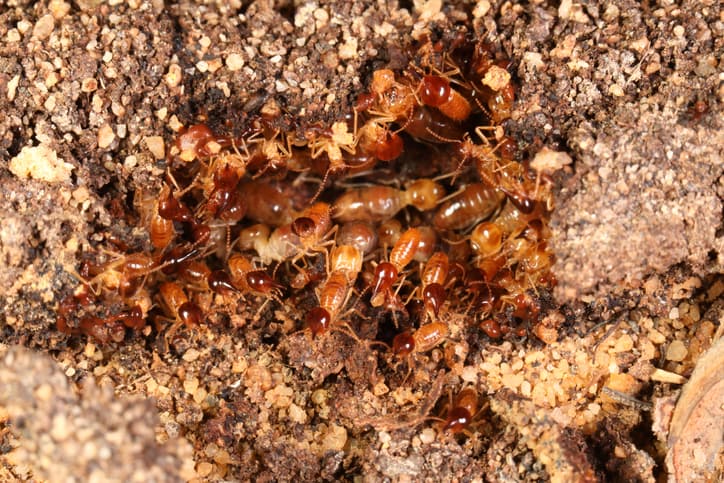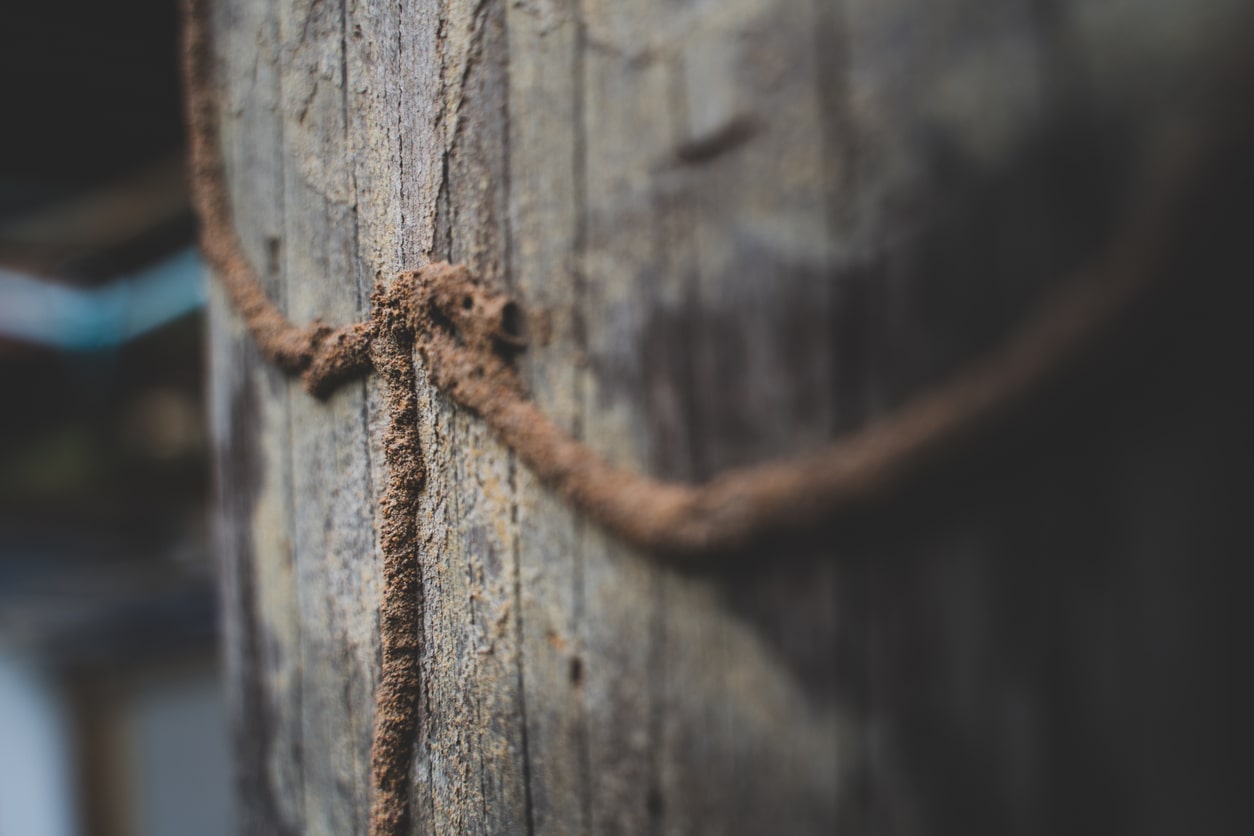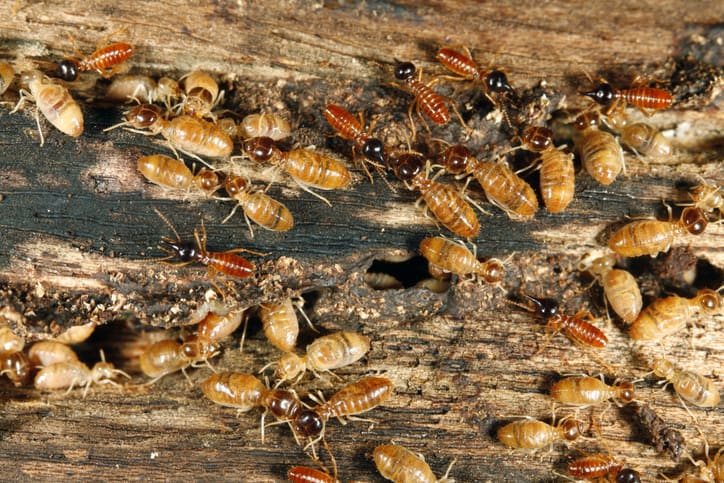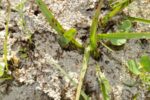
How to Get Rid of Subterranean Termites
How do you get rid of subterranean termites? If you think you might have an infestation, you’re likely very eager to know the answer to this question. This worrying problem can send any homeowner on a panicked search for “how to kill subterranean termites” or “how to get rid of subterranean termites.” It’s understandable. Termite infestations can be financially devastating and disruptive for homeowners.
Found on nearly every continent except Antarctica, these determined bugs have successfully established themselves on land masses in most climates. Many species of termites, including subterranean termites, can have a significant economic impact. These species can inflict severe damage on buildings, homes, businesses, forests, and crops. Subterranean termites, the most common type of termites in the U.S., are responsible for billions of dollars in damage worldwide each year. South Florida homeowners must stay vigilant against these destructive bugs to protect their homes.
Thankfully, you can help stop these pests from causing more costly damage to your home. Read on to learn more about how to get rid of ground termites or subterranean termites from the pest control experts at Hulett.
What Are Subterranean Termites?
Subterranean termites are one of the types of termites found in Florida. They nest in soil and are known for being the most destructive termites to Florida homes. Unfortunately, by the time most homeowners notice their presence, the infestation is severe.
“Subterranean” means “under the earth,” which refers to the ways that these bugs nest and infest structures. They live underneath the ground and can invade homes from underground. A subterranean termite colony can cover up to an acre underneath a single dwelling. The nests are typically in moist, dark environments that are not easily spotted. To travel above ground, they build and travel through mud tubes to avoid being detected. They may build carton nests in the attics or walls of homes or nearby trees, as well. The mud and carton allow the termites to stay in your home, eat wood, and still keep the moist environment that they need to survive.
Termites live in colonies or cooperative societies and engage in social behaviors similar to ants. They divide labor between “soldiers,” “workers,” and “swarmers.” A settlement may have one or more queens or female reproductive termites. Within the colony, termites share food and divide the responsibility of caring for the young. Workers are the largest group within the colony, and are the caste that is responsible for damaging homes, as they are responsible for finding food and feeding the rest of the colony, which unfortunately for homeowners in South Florida, can contain many several million termites in a single colony.
Termites also have three distinct life stages: egg, nymph, and adult. The change between phases occurs gradually. Unlike some other insects, they do not have a pupal stage, but instead, termites grow gradually by molting.
Workers: Behaviors and Characteristics
- This group is made up of immature “pseudergates.”
- After emerging from eggs, workers grow to approximately 1/8 of an inch long.
- They are cream in color.
- Their responsibilities consist of repairing nests, caring for the queen and the young, finding food and feeding the colony, grooming the young termites, and working around the colony.
Soldiers: Behaviors and Characteristics
- This group is responsible for defense, primarily against ants.
- Soldiers’ heads are more prominent, harder, and darker than their bodies, good for defense.
- Soldiers also use their teeth-like mandibles to defend the colony.
- Depending on the species, they comprise anywhere from 1-2% to 10% of the colony.
Adult Winged Termites (Kings and Queens): Behaviors and Characteristics
- Referred to as “reproductives,” “swarmers,” or “alates.”
- They have eyes and functioning wings, unlike other castes.
- When they have wings, they are called alates or swarmers.
- Once they shed their wings (dealate) and find a mate to start a colony, they become kings and queens.
- They usually swarm in spring and summer, but some species swarm all-year-round.
Fun Insect Fact: Termite queens are incredibly long-lived for insects. There are some reports of queens living as long as 30 years, or more.
What Are the Different Types of Subterranean Termites?
Subterranean termites, a group that includes many species, are the most destructive of the three types of termites and the most problematic for homeowners. In South Florida, three species of subterranean termites commonly infest homes, although there are a few more that can infest, as well.
- Formosan. These invasive bugs are the most destructive termites in South Florida. These “super termites” look similar to Asian termites, but Formosan swarmers have a uniform, yellowish coloring. One colony of Formosans can consume as much as a pound of wood per day.
- Asian. These termites look similar to Formosan termites, as these bugs are also invasive and are closely related to the Formosan termite, but you can distinguish them by the swarmers. Formosan swarmers have a yellow color, while Asian swarmers have a distinct bi-color appearance, being dark brown on their backs, and a light yellow coloration on their bellies.
- Eastern. Eastern subterranean termites, a species native to Florida, are widely distributed across the eastern United States. These swarmers are very small, and very dark in color, almost black.
How to Identify a Subterranean Termite Infestation
It’s essential to spot subterranean termite signs before damage occurs. Termite damage can be financially devastating. Unfortunately, your homeowner’s insurance will likely not cover any damage from termites. Insurance companies see this damage as preventable because they consider pest control part of the regular maintenance of owning a home, especially in South Florida. Look out for these important signs of a termite infestation:
Discarded Wings
One of the first signs of a termite infestation is discarded transparent termite wings. You may notice them in or around your home. This indicates either an infestation in your home or heavy termite activity in the area. Adult winged termites can fly to reproduce and start a new colony. Once they have established a suitable nest, their wings have served their purpose, and it’s easier for the insects to discard them. Without wings, they can better navigate tight spaces and crawl into tiny holes to make a nest.
Presence of Swarms
The presence of swarming insects is hard not to notice and is another early warning sign of a termite infestation. Winged termites travel in swarms over long distances, searching for new termite colonies. You’ll find them swarming around light sources. You are most likely to see swarming termites in spring and summer, but some species will swarm all year round. If there are tremendous swarming numbers occurring within your home, this can suggest your home is infested.
Wall Sounds
If you’ve heard strange noises coming from your walls, or wooden studs, it’s possible termites are to blame. Soldier termites make noise when they bang their heads against wood or shake their bodies. Termites can detect even the slightest vibrations, so the soldiers make noise to alert other termites of dangers, causing the insects to scatter. Worker termites are very loud eaters, and you may hear their chewing sounds, too. Rodents or other insects can also be responsible for wall sounds, so try to look for other signs to corroborate the presence of termites, such as frass, mud, moisture, or wood damage.
Hollow Wood
Check the wood in your home for signs of termites. If you knock on wood and it sounds hollow, it may have sustained termite damage. Wood that looks papery can also be a sign of termites.
Mud Tubes
Subterranean termites need a moist environment, even when they’re foraging. That’s why they build mud tunnels or tubes. It ensures that they can travel from the colony to the food source without worrying about dryness. You may notice these tubes, which are made from soil, saliva, termite poop, and wood on the interior or exterior of your home.
Bubbling or Peeling Paint
Termites eat wood from the inside out, leaving nothing but a thin veneer. That makes it harder to notice the damage they cause to the wood around your home before it’s hollowed out. As they eat the wood, the only sign of their activity may be peeling, bubbling, tiny cracks, and other disturbances in the wood’s exterior. These can be signs of severe damage to the wood from termites.
How to Get Rid of Subterranean Termites
Florida’s moist environment makes it ideal for subterranean and other types of termites to thrive. Swift and effective treatment is necessary to get rid of these pests. Most people think of tent fumigation when it comes to termite control measures, but that’s just one of many ways to get rid of termites. Additionally, that treatment is best for drywood termites, not subterranean ones. Fortunately, the treatments for subterranean termites are less disruptive. Hulett’s options include the Hulett Liquid Defense Termite Treatment and Hulett’s Termite Baiting Systems.
- Liquid Defense Termite Treatment. Trained technicians apply a specialized termiticide, an odorless and effective liquid treatment in the soil around the perimeter of your home, and a specialized product on the interior of the home in areas of activity, that work together to quickly eliminate an infestation in most situations and help to protect your home from future ground invasion.
- Termite Baiting Systems. This environmentally-responsible and extensively tested subterranean termite treatment uses bait stations. The termite baits contain an active ingredient that termites take back to the colony to eliminate the colony. It’s advised to be proactive and prevent termites before you have to worry about an infestation and costly repairs.
Read on to find out how to prevent termites from causing costly damage to your home that is not covered by homeowners insurance.
Tips for Subterranean Termite Prevention
There are some steps you can take to help make it less likely that a subterranean termite colony will establish itself on your property:
- Ensure your home has proper drainage and grading to keep the soil dry.
- Keep plant debris from blocking your vents and gutters.
- Don’t plant shrubs and trees too close to your home, especially if there are exposed wooden surfaces, and keep them trimmed. This is important for frequent inspections around your foundation.
- Avoid stacking wood against your home’s exterior, an obvious food option.
- Fill in any cracks in your home’s foundation to help prevent entry.
- Address any leaks or moisture buildup in your home, to avoid conditions that are conducive for subterranean termites to thrive.
- Consider using more concrete than wood if you’re building a new home.
- Perform an annual pest control and termite inspection even if you do not have termites. This is especially important if you have an older home, which can be more susceptible to termites. If you’re selling your home, you’ll likely be required to complete a termite inspection.
- Contact a pest control company to do preventive termite control, like termite baiting systems.
Frequently Asked Questions About Subterranean Termites
We get many questions about termites at Hulett. Subterranean termite infestations can be overwhelming, and we often field calls from panicked homeowners on this topic. We’ve gathered our answers to some of the most common questions we get below. If you have a question not answered here, please don’t hesitate to contact us.
Can You Treat Subterranean Termites Yourself?
If your home is at stake, it’s best to work with a professional. Even if you feel you have a minor termite problem, if you fail to eradicate the problem, you risk the infestation spreading to your home and further termite damage.
What Is the Fastest Way to Get Rid of Termites?
Contacting a professional pest control company at the first signs of an infestation is the quickest and most effective way to get rid of an infestation. They are experienced and have access to the best products available.
How Much Does It Cost to Get Rid of Termites?
Termite treatments depend on the type of termite and the right service treatment for them. An inspection by a professional is needed to be sure your treatment is successful. Hulett, for over 50 years, has inspected your home to determine the type of termite, the severity of the infestation, and which treatments are necessary. Then, we can give you a fast estimate with absolutely no obligation. Also, the inspection is free.
For Professional Termite Control, Just Call Hulett
At Hulett, we’ve helped many South Florida homeowners eradicate subterranean termites and protect their homes from further structural damage. Insects can adapt quickly to their environment, which is why training and education are a crucial part of our business.
See why so many customers trust Hulett for termite treatment services in South Florida. Let us help keep your home, your most important asset, free from these destructive intruders. Contact us today for a free, no-obligation termite inspection.





